Come with us on a tour of six noteworthy museums that are preserving the past and furthering the future of western art
THE BRINTON MUSEUM
Big Horn, WY
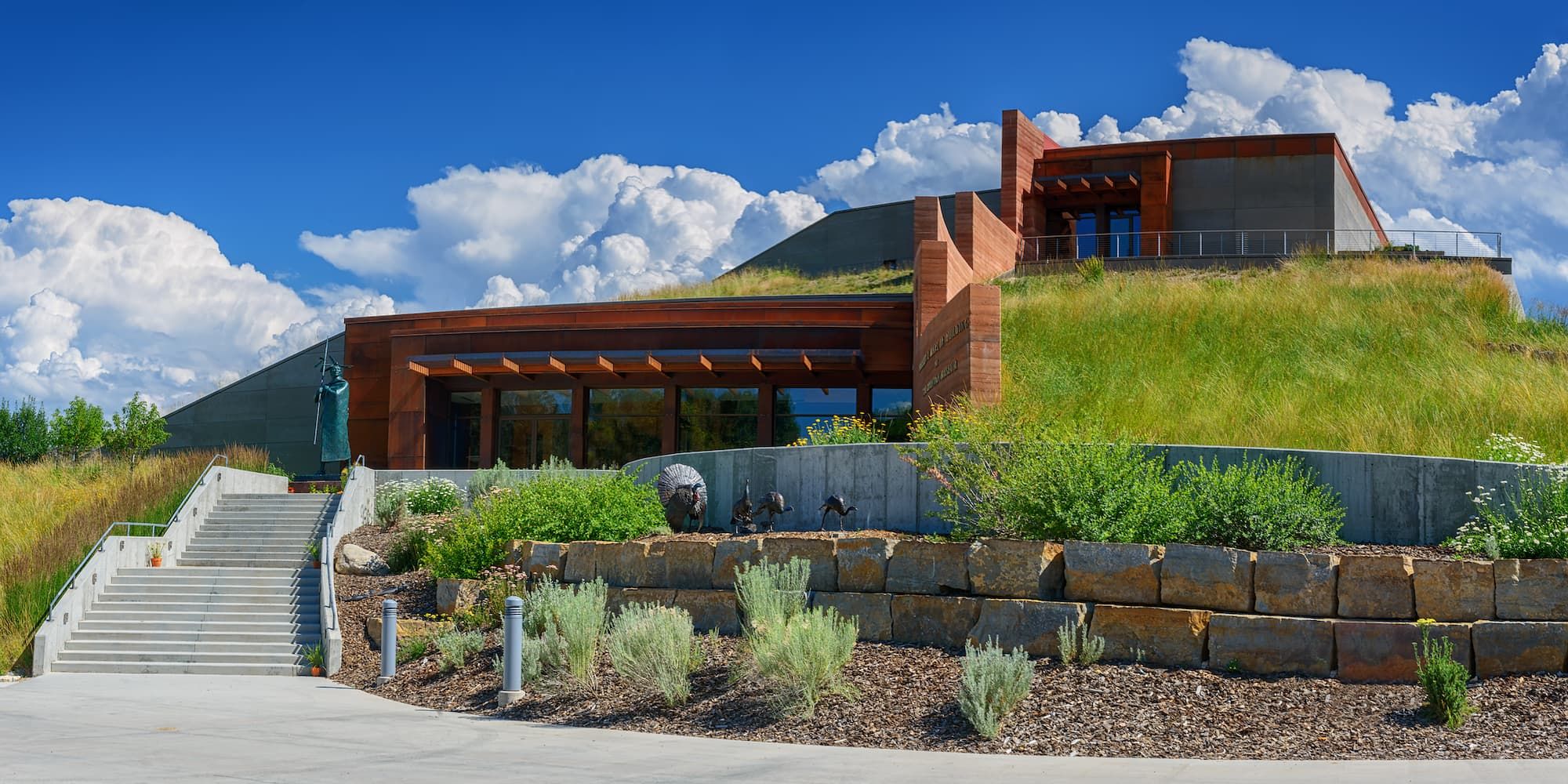
The Brinton Museum’s Forrest E. Mars Jr. Building in Big Horn, WY.
“Preserving the historic West and also collecting the contemporary West” is how director and chief curator Ken Schuster sums up the mission of The Brinton Museum. Poised on 620 pristine acres in the foothills of the Bighorn Mountains near Big Horn, WY, the museum began a century ago as the retreat of millionaire Illinois businessman Bradford Brinton. In 1923, he bought this portion of the historic Quarter Circle A Ranch as a personal retreat, built a two-story home, and filled it with his collection of Native American artifacts as well as western paintings and sculptures by local artists he knew and admired, including Frederic Remington, Charles M. Russell, and Edward Borein. “That collection really gives you a glimpse into his passion for their works and his friendships with them,” says Schuster.
Brinton left the property to his sister, Helen, in 1936; upon her death in 1960, her will established the Bradford Brinton Memorial, consisting of the land, the house, and the original collection. Today, however, museum visitors are welcomed to the Forrest E. Mars Jr. Building. Built in 2015, the 24,000-square-foot, eco-conscious facility is nestled into a hillside, with three floors of exhibition space for what is considered one of the Rocky Mountain region’s most significant, comprehensive collections of western and Native American art. Among many highlights, Schuster singles out such important holdings as a group of portraits done on the Blackfeet Reservation during the 1920s by German-American artist Winold Reiss; an ever-growing collection of Plains Indian artifacts, including exceptional headdresses, war shirts, leggings, and dresses; and a 5-by-6-foot muslin painting depicting the Battle of Little Bighorn, dating from around 1920. “It’s an amazing piece,” says Schuster.
One special attraction for visitors this autumn is The Brinton 101, on view from November 5 through December 23. “It’s our annual Christmas small-works fundraiser,” Schuster notes, “and we invite 101 painters and sculptors from all around the country to participate.” For more information: www.thebrintonmuseum.org. —Norman Kolpas
WESTERN SPIRIT: SCOTTSDALE’S MUSEUM OF THE WEST
Scottsdale, AZ
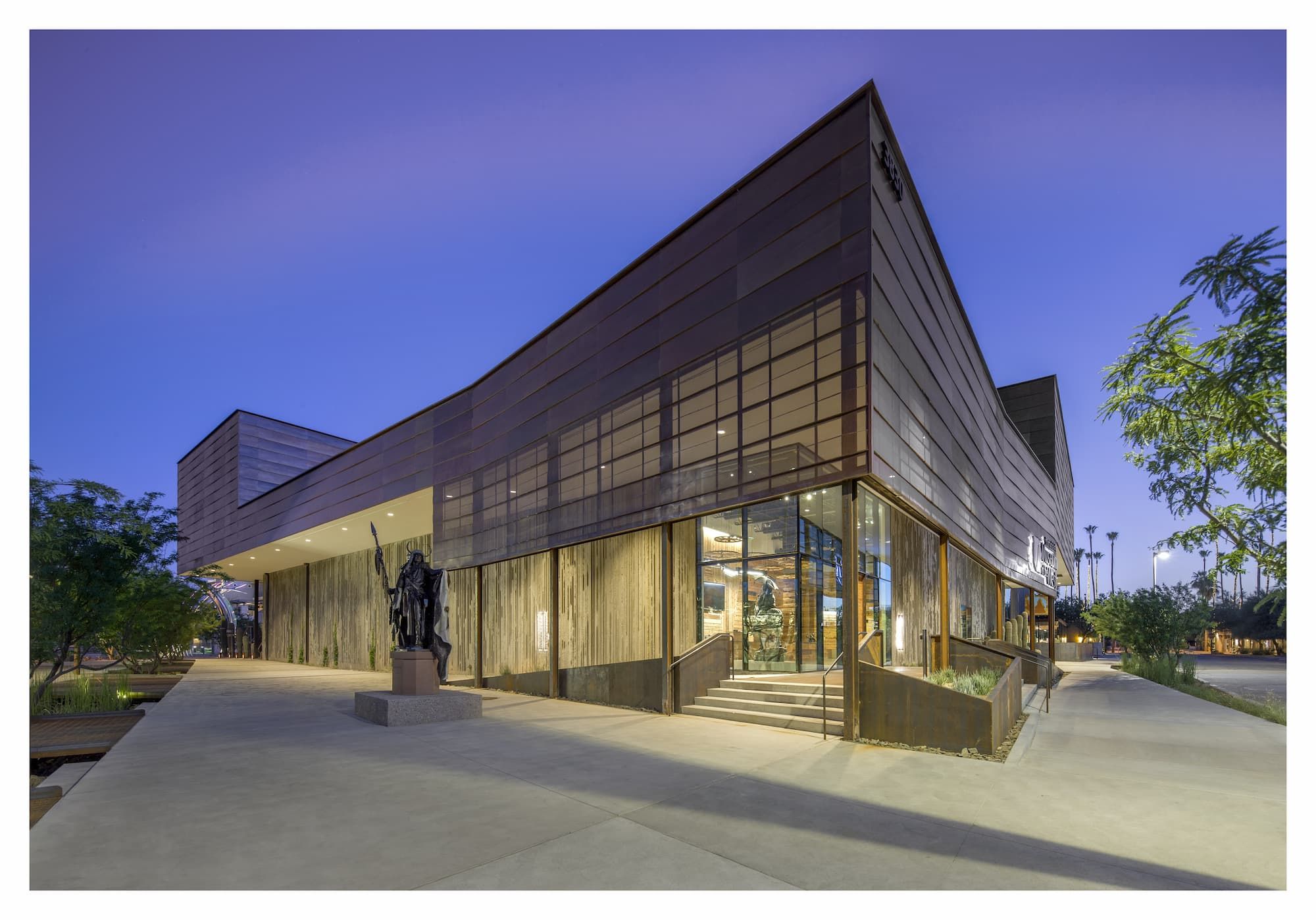
Western Spirit: Scottsdale’s Museum of the West in Scottsdale, AZ. (Photo Credit: Studio Ma, Bill Timmerman)
A relative newcomer among western museums, Western Spirit: Scottsdale’s Museum of the West opened in January 2015 in Old Town Scottsdale. Its original intention was to host primarily traveling exhibitions. “Then we realized that there were some incredible collections we did not want to leave the state of Arizona, as others already had,” says Dr. Tricia Loscher, assistant director and chief curator of collections, exhibitions, and research. “So we became a collecting institution.” Beyond that, Loscher adds, the museum developed a unique focus. “Although the cowboy and Indian West is certainly a significant part of it,” she says, “our mission is to connect the historic past with the present and future of the West.” It’s a region they broadly define as “west of the Mississippi all the way to Hawaii, along with western Canada and northern and northwestern Mexico. So visitors can expect to see a wide diversity of material and perspectives.”
Almost eight years since its founding, that approach continues to delight visitors, as do the museum’s size and setting: a 43,000-square-foot, environmentally conscious building inspired by Anasazi and Pueblo architecture. It houses an ever-growing permanent collection with many highlights: more than 1,400 artifacts such as saddles, spurs, chaps, badges, holsters, revolvers, rifles, and knives, many of which are rarities; over 65 works by more than 20 Hopi potters, past and present; and a collection of more than 200 works by Southwestern women artists starting in the 1890s.
Among a roster of special exhibitions, opening in November is a show of artworks by Navajo brothers Jeremy and Jerrel Singer. “They speak to cultural traditions in very contemporary new ways,” Loscher observes. On view now through next April, Light and Legacy features a monumental selection of works from Edward S. Curtis’ landmark photographic documentation of Native Americans. And October 15 brings the museum’s third annual Saddle Up fundraiser, with live music, food and drink, and an auction—yet another aspect of the museum’s multifaceted definition of Western Spirit. For more information: www.scottsdalemuseumwest.org. —Norman Kolpas
COUSE-SHARP HISTORIC SITE
Taos, NM
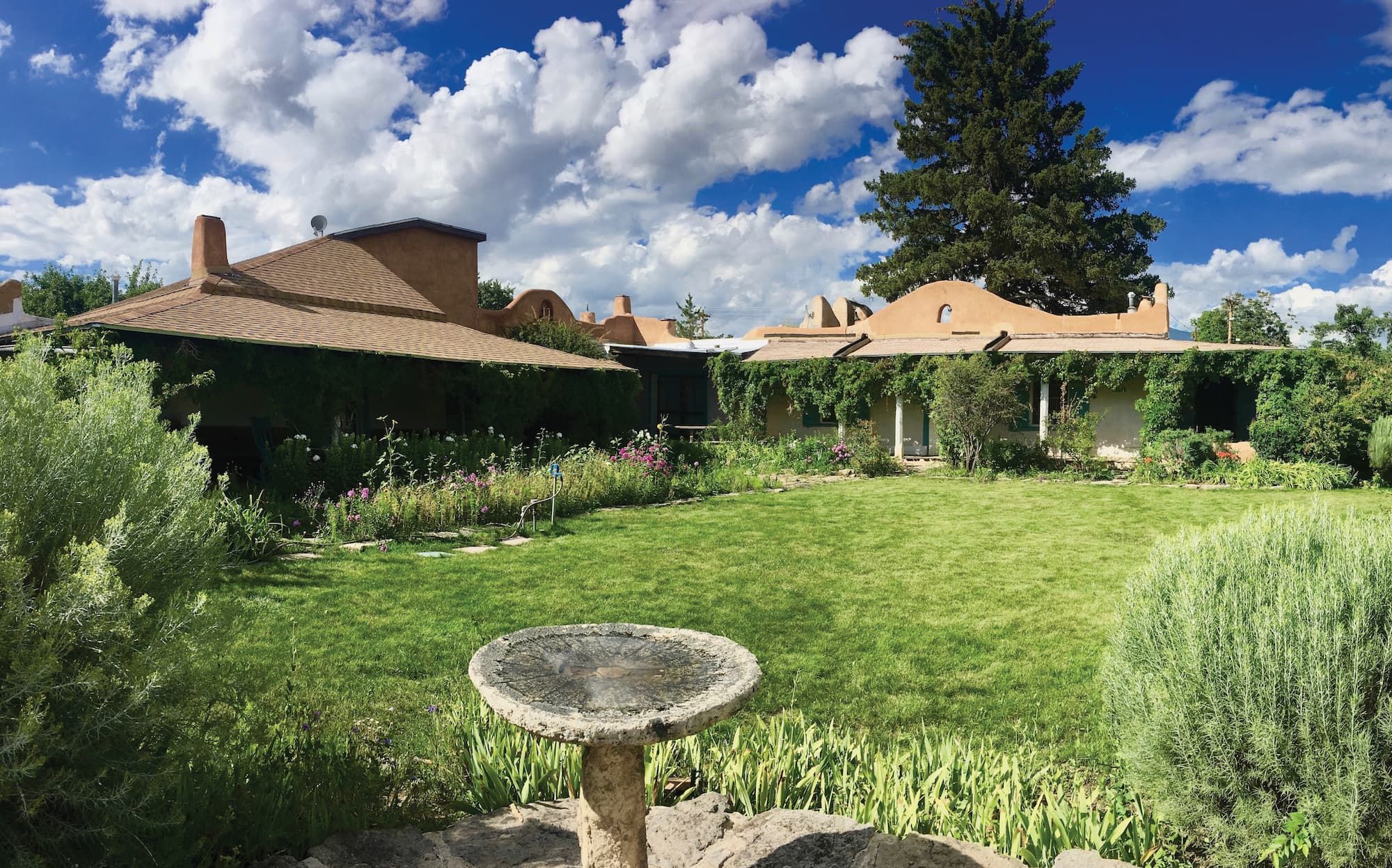
The Couse-Sharp Historic Site in Taos, NM.
The modest entrance to the Couse-Sharp Historic Site, on a side street in the central historic district of Taos, NM, reveals little of the wondrous world within. The 2-acre-plus museum offers visitors an incomparable look into the early days of the famed Taos Society of Artists and two of its key founders, E. Irving Couse and Joseph H. Sharp. It encompasses Couse’s well-preserved, century-old home, two vintage studios filled with original art, outbuildings, a mid-19th-century chapel transformed into a gallery space, lush gardens, and the newly built 5,000-square-foot Lunder Research Center.
“The site has the unique ability to transport the visitor back in time to experience the Taos that the artists stepped into,” says executive director Davison Koenig. “The lush gardens overlook the vast expanse of the Taos valley. Couse’s studio remains as he left it”—the artist died in 1936 at the age of 70—“with an unfinished painting on the easel, framed paintings filling the walls, and Pueblo pottery surrounding the space.” A short stroll away, the studio built in 1915 by Sharp—Couse’s closest friend—features over 30 of his paintings, along with eloquent, moving correspondence in his exquisite handwriting.
Opening on October 1, the Lunder Research Center is poised to become a major academic resource and archive on Taos artists past and present. Its Dean Porter Gallery features landscapes by contemporary Taos painter Jivan Lee through November. Other highlights on the museum’s grounds include the tool-packed shop where Couse’s son Kibbey, a mechanical engineer, invented the Couse Mobile Machine Shop, a battlefield repair facility that played a key role in the Allies’ World War II victory.
Visitors learn a wealth of “colorful stories passed down through the Couse family,” notes Koenig. They may even cross paths with the delightfully welcoming Ginny Couse, the artist’s granddaughter and biographer, now 90 years old, who lives at the site. For more information: www.couse-sharp.org. —Norman Kolpas
WOOLAROC MUSEUM
Bartlesville, OK
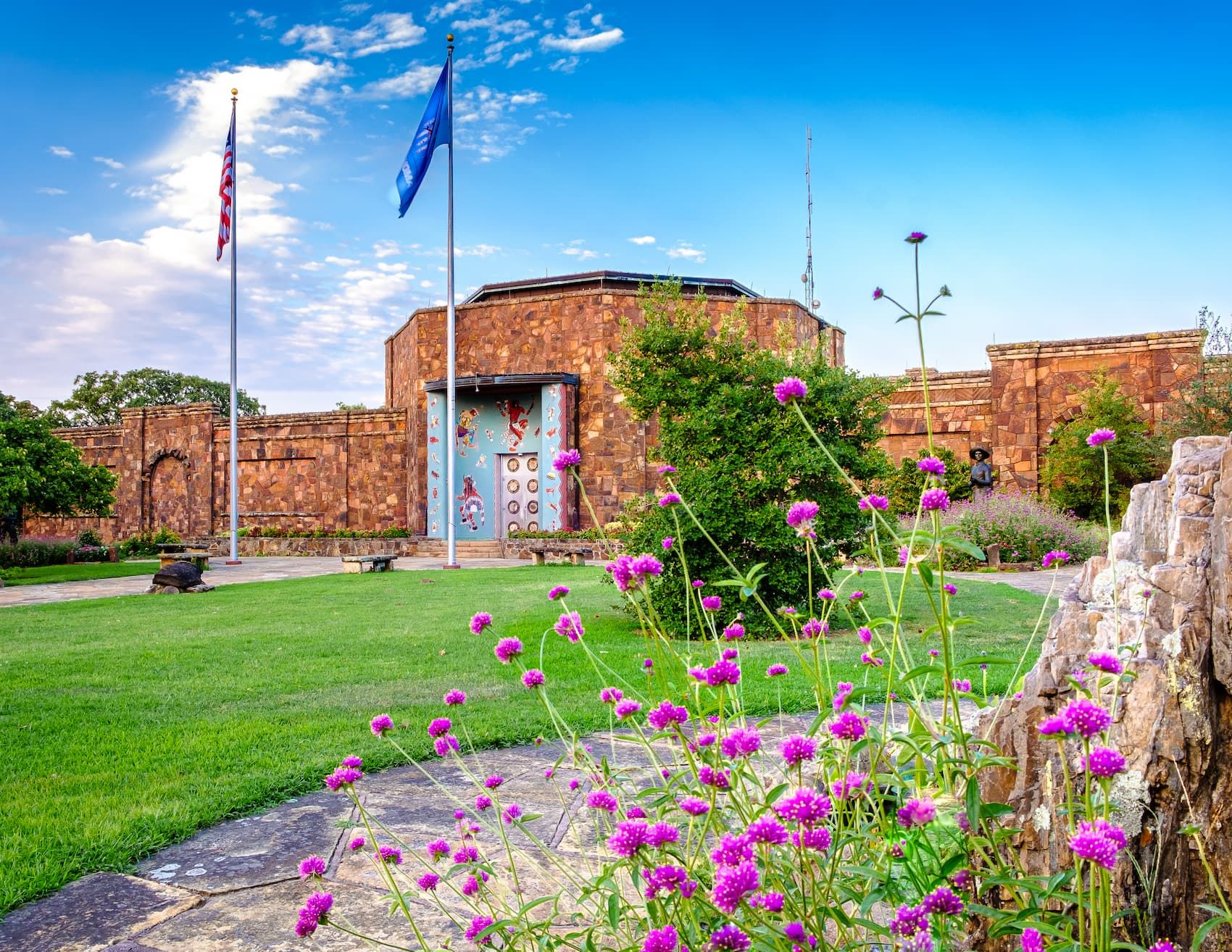
The Woolaroc Museum & Wildlife Preserve in Bartlesville, OK.
Where else but at the Woolaroc do you reach a top-notch art museum by first driving through hilly woodlands where bison roam free, water buffalo and zebra graze in large enclosures, and teepees are set up as early Osage people would have lived in them?
First established in 1925 as a ranch retreat for oilman Frank Phillips and his wife, Jane, the 3,700-acre Woolaroc Museum & Wildlife Preserve near Bartlesville, OK, also features a historic log home, baby animals in a petting zoo, and a restored monoplane that took part in a 1927 air race from California to Hawaii. And that’s not to mention the 50,000-square-foot museum filled with exceptional western and Indigenous art and artifacts. “It’s very easy to spend the whole day here,” says museum director Shiloh Thurman.
The museum itself began in 1929 with Phillips’ acquisition of the monoplane, whose semi-enclosed, two-story display space soon grew to contain display cases with overflow from the couple’s collection of artwork and Native pottery and blankets. As the collection grew over time, so did the museum space. Today it is home to artifacts from some 40 tribes, historical western items including a large collection of Colt firearms, and artworks by such masters as Frederic Remington, Charles M. Russell, Thomas Moran, and Frank Tenney Johnson, along with several members of the Taos Society of Artists.
Among the more recently deceased artists in the permanent collection are Wilson Hurley, John Clymer, and Bettina Steinke. Every two years the museum hosts the Woolaroc Retrospective, a national art exhibition and sale featuring both retrospective and brand-new works by renowned western artists. The next edition opens in October 2023.
The legacy of a man born in Nebraska in 1873, the museum’s extensive collections tell a themed story. Ultimately, the Woolaroc carries on, as Thurman puts it, “one man’s vision of the American West.” For more information: www.woolaroc.org. —Gussie Fauntleroy
STEAMBOAT ART MUSEUM
Steamboat Springs, CO
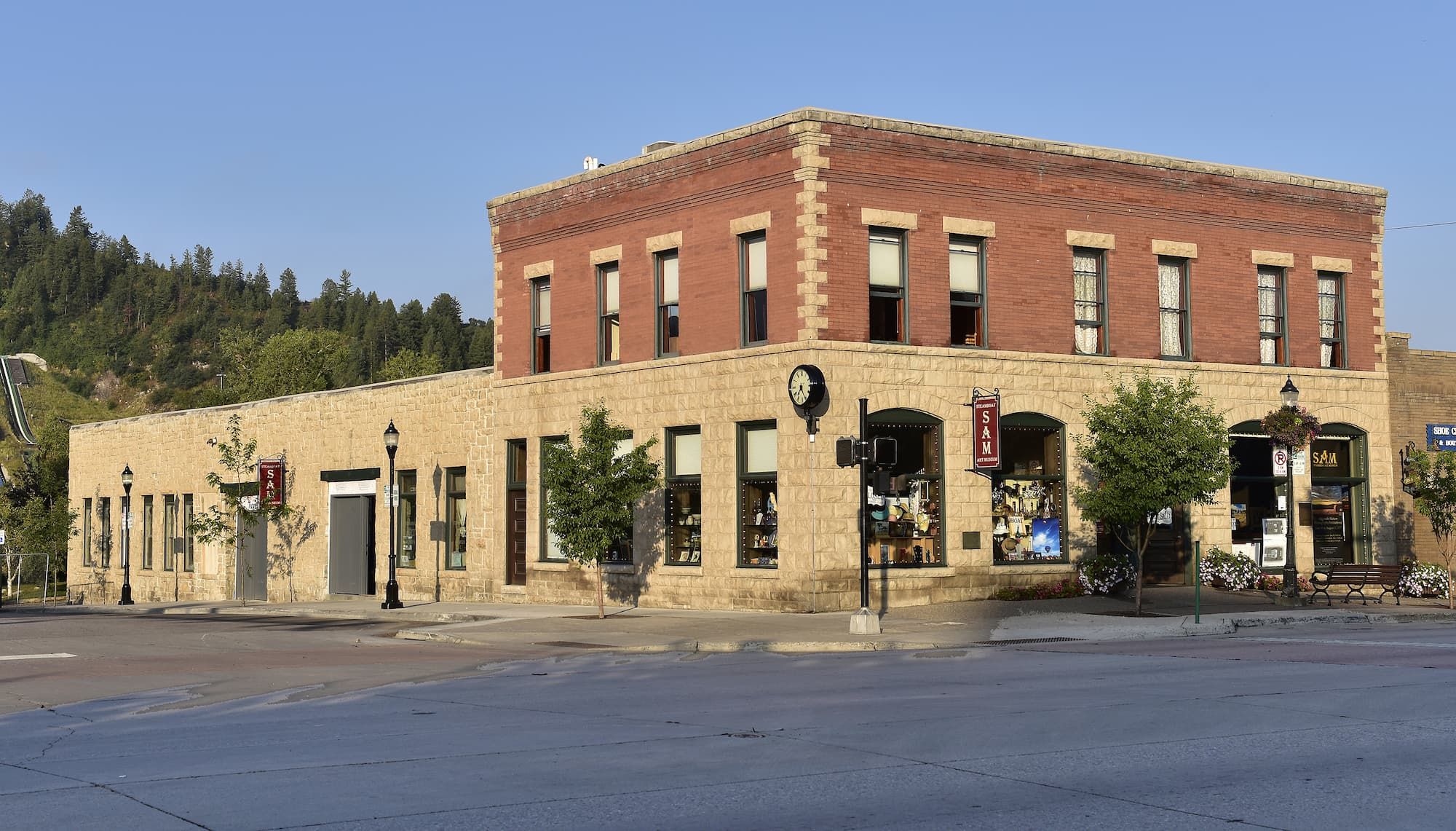
The Steamboat Art Museum in Steamboat Springs, CO.
Those familiar with Steamboat Springs, CO, may know the small mountain city for its skiing, hot springs, and beautiful setting in the northwestern part of the state. But it is also a vibrant arts community whose rich cultural offerings are anchored, in the heart of town, by the Steamboat Art Museum.
Opened in 2006, the museum occupies a grand old building filled with the community’s own soul, having housed many businesses since it was built in 1905. Returned to its original beauty through historic restorations completed in 2017, its role today is to offer world-class fine art to visitors and locals alike.
In particular, the museum has gained a reputation for presenting the work of some of the best living American artists relevant to the West. In recent years it has hosted national exhibitions for the Oil Painters of America and American Women Artists organizations, along with a strong and growing permanent collection.
And it is expanding its vision with an upcoming exhibition focusing on contemporary Indigenous and western art and the powerful influence of the Institute of American Indian Arts in Santa Fe, NM. The New West is guest-curated by Seth Hopkins, executive director of the Booth Western Art Museum in Cartersville, GA, and runs December 2 through April 15. “It’s very exciting,” says Betse Grassby, executive director of Steamboat Art Museum. “This is a story that hasn’t been told in this region of Colorado.” The show features works by IAIA instructors Fritz Scholder and Allan Houser as well as early IAIA students T.C. Cannon, Earl Biss, Doug Hyde, Dan Namingha, and Kevin Red Star. Contemporary western artists featured include Ed Mell, Donna Howell-Sickles, Kim Wiggins, and Billy Schenck.
The Steamboat Art Museum presents major summer and winter exhibitions and a popular plein-air event each September. With membership-based funding, admission to exhibits and other activities is free. “We believe that good art should be accessible and experienced by everyone,” says Grassby. For more information: www.steamboatartmuseum.org. —Gussie Fauntleroy
DESERT CABALLEROS WESTERN MUSEUM
Wickenburg, AZ
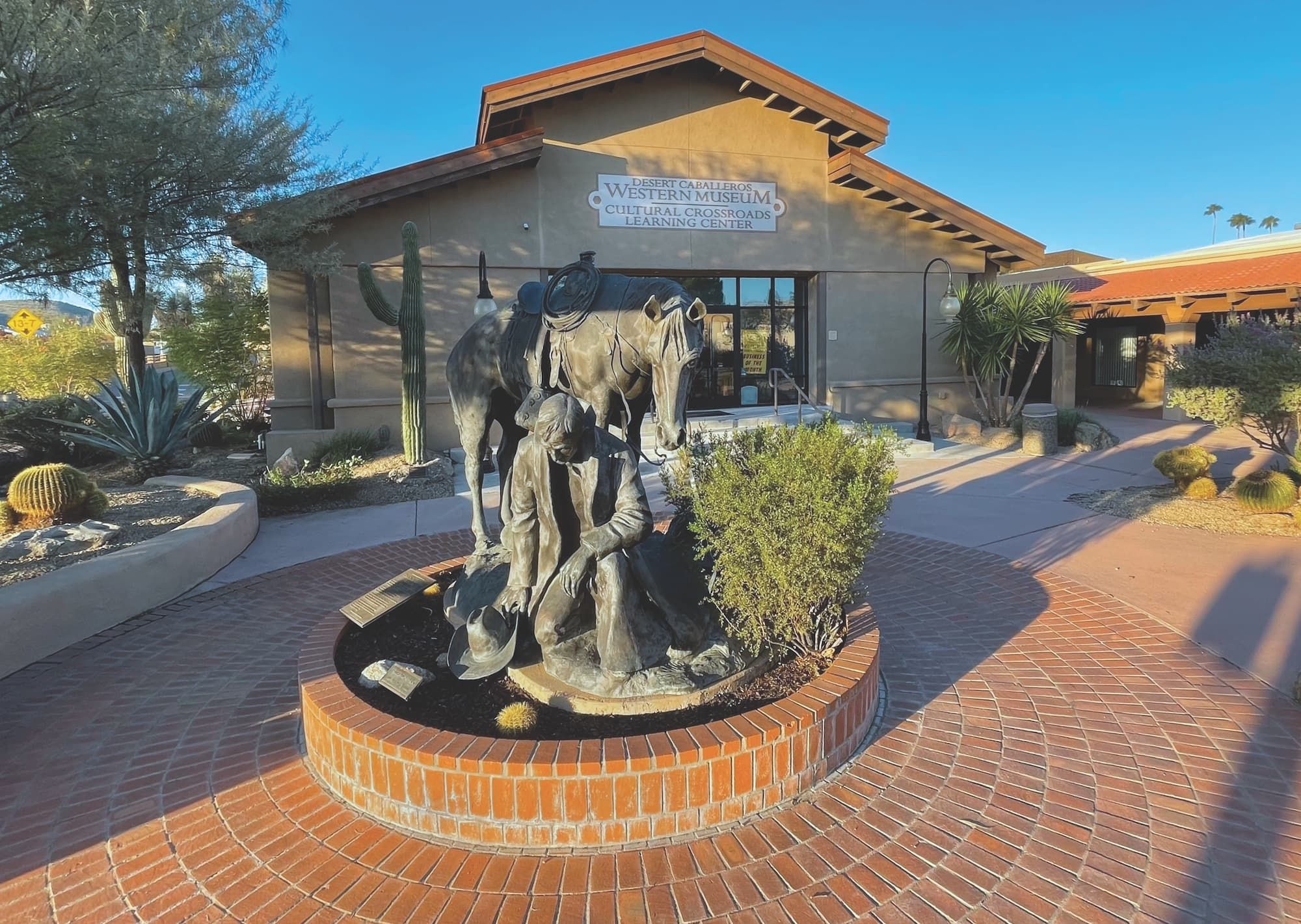
The Desert Caballeros Western Museum in Wickenburg, AZ.
In 2006, trustees of the Desert Caballeros Western Museum in Wickenburg, AZ, came up with a revolutionary idea. Even as women were chipping away at glass ceilings in some areas of American business and cultural life, the world of western art continued to be dominated by men. Frustrated by the relative lack of opportunities for talented female artists, the museum established an annual exhibition to give them their due. Since then, Cowgirl Up! has become known as the “preeminent western art show exclusively for women artists,” notes the museum’s executive director, Dan Finley.
Opening in March each year and running through Labor Day, Cowgirl Up! invites some 65 of the country’s top female artists to collectively present up to 300 artworks in a broad range of genres and styles. “It’s quite a show,” Finley says. Among the noted artists who participated in 2022: Evelyne Boren, Linda Glover Gooch, Donna Howell-Sickles, Lisa Danielle, Stephanie Revennaugh, and Star Liana York.
Over the years, Cowgirl Up! has made an appreciable difference in many artists’ careers—and it has also helped boost the museum’s already strong reputation as a worthwhile art destination. Regularly ranked among the four best western art museums in the country, it houses collections with a balance of traditional and contemporary styles and works by historic and living artists.
Western masters in the permanent collection include Albert Bierstadt, Charles M. Russell, Frederic Remington, George Catlin, and Thomas Moran. “We’re very proud of that collection,” Finley says, adding that the level of accomplishment among the collection’s living artists is exemplified by such painters as Bill Anton, John Coleman, and Ed Mell.
Exciting changes are on the horizon for the museum, which has obtained property nearby for construction of a new facility to replace the aging existing building. Meanwhile, visitors enjoy top-notch western art in what Finley calls a “consummate western town, the embodiment of the West since its earliest days.” For more information: www.westernmuseum.org. —Gussie Fauntleroy
This story appeared in the October/November 2022 issue of Southwest Art magazine.





